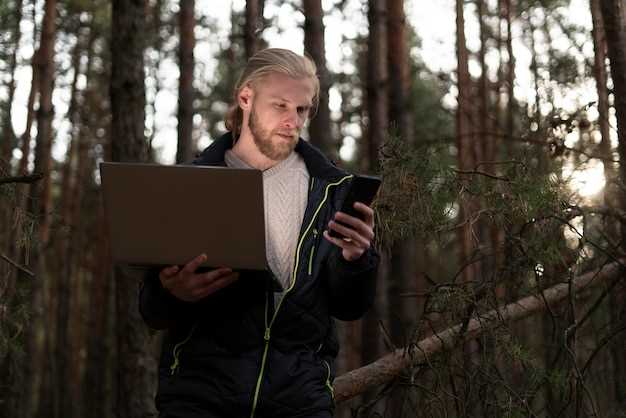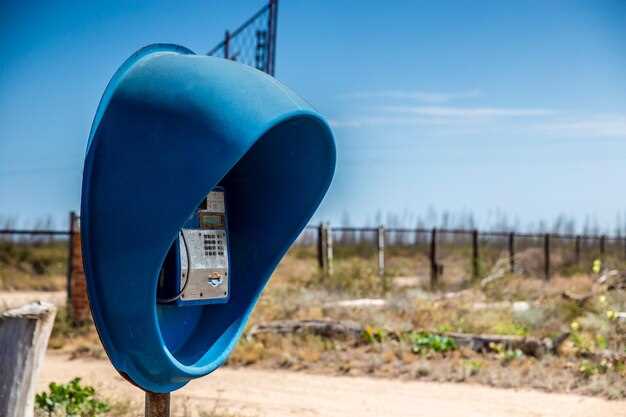
In emergency situations, especially in remote locations, the ability to effectively signal for help can be a matter of life and death. Understanding the various methods available to communicate distress is essential for anyone venturing into the wilderness or isolated areas. This article explores the critical techniques and tips for signaling help when you find yourself in a precarious situation.
One of the first steps in ensuring your safety is to familiarize yourself with the signals that can attract attention. Using visual and auditory signals is fundamental, as they can reach potential rescuers even when you are miles away from help. Knowledge of these techniques enhances your chances of survival and expedites the rescue process.
In this article, we will delve into various signaling methods ranging from traditional smoke and sound signals to modern technology like GPS and mobile devices. Each technique serves its purpose and can be adapted based on the environment and available resources. By equipping yourself with this knowledge, you empower yourself to take decisive action during an emergency.
Choosing the Right Signaling Device for Your Situation
When venturing into remote locations, being prepared for emergencies is crucial. One of the most important aspects of emergency readiness is selecting an appropriate signaling device. The right device can help ensure that you are noticed and rescued quickly in a crisis. Here are some factors to consider when choosing a signaling device:
- Type of Environment: Consider the terrain and weather conditions of the area you will be in. Some devices work better in specific environments. For instance:
- In wooded areas, reflective mirrors might be more effective than loud whistles.
- For high-altitude locations, an emergency beacon may be necessary due to the expansive area and potential for low visibility.
- Range of Visibility or Audibility: Evaluate how far you need your signal to be seen or heard. Emergency flares and aerial signal devices can be highly visible at great distances, while whistles may be best for closer proximity calls for help.
- Ease of Use: Select a device that you can easily operate under stress. For example:
- A loud whistle can be quickly blown and does not require special skills or conditions.
- A signaling mirror requires a bit of practice to align with sunlight correctly but can be very effective.
- Reliability: Choose a signaling device that is durable and dependable. Battery-operated devices should have a long-lasting charge or be equipped with manual back-ups. Solar-powered options can provide sustainability in extended situations.
- Weight and Portability: Especially in remote locations, consider how easy the device is to carry. Compact and lightweight devices are preferred, especially for hiking or traveling long distances.
- Multi-functionality: Some signaling devices can serve multiple purposes. For example, a whistle can also be used for other communication needs, or a flashlight can indicate your position when signaling in the dark.
Ultimately, the best signaling device for your situation depends on a combination of these factors. Consider your personal needs, the environment, and the potential emergency scenarios you might face. Investing in the right equipment can make a significant difference in the outcome of an emergency situation.
How to Use Mirrors and Reflective Surfaces for Visibility
Using mirrors and reflective surfaces can be an effective technique for signaling for help in remote locations during an emergency. These tools enhance visibility, making it easier for rescuers to spot individuals in distress. The following methods outline how to effectively utilize these surfaces for maximum visibility.
| Technique | Description |
|---|---|
| Sunlight Reflection | Position a mirror to reflect sunlight toward rescue aircraft or search parties. Aim for a spot where the light can catch their attention, flashing bright beams. |
| Signal Patterns | Create specific patterns by moving the mirror to create a series of flashes. A common pattern is three short flashes followed by three long flashes, indicating distress. |
| Multiple Surfaces | If a mirror is not available, use any nearby reflective surfaces such as metal or glass to create signals. The reflection should be aimed at areas likely to be observed by rescuers. |
| Adjusting Angles | Change the angle of the mirror or reflective surface to maximize visibility based on the position of the sun or the direction of potential rescuers. This can help maintain consistent signaling. |
| Time Consideration | Signal during times of day when visibility is higher, such as mid-morning or late afternoon. Avoid early mornings or late evenings when sunlight may not be strong enough. |
Remember that effective signaling can significantly increase the chances of rescue. Ensure mirrors and reflective surfaces are readily accessible whenever venturing into remote locations.
Creating Sound Signals to Attract Attention

In remote locations, gaining attention for rescue can be a matter of life and death. Sound signals are an effective means of communication in such environments. The key is to produce distinctive sounds that can travel over long distances and are easily recognizable as distress calls.
One common method of creating sound signals is using a whistle. Whistles are lightweight and can produce a loud sound that carries well in outdoor settings. The universal distress signal is three short bursts followed by three long bursts, repeating the pattern. This sequence is easily identifiable and conveys the need for help.
If a whistle is not available, clapping your hands or using objects to create noise can also be effective. Make rhythmic sounds, such as three claps followed by three loud bangs on a rock or tree. The repetition helps in making the signal stand out amidst the ambient noises of nature.
In some cases, portable sound devices like signal mirrors or emergency beacons that emit audible alerts can be utilized. These devices are specifically designed to attract attention, often producing sounds that can be heard from several hundred meters away, significantly increasing the chances of being located.
When creating sound signals, it’s vital to remain proactive and audible. Position yourself in an open area where sound can disperse and ensure that signals are spaced out appropriately. Remember to conserve energy; periodic signaling can maintain attention without exhausting resources.
Sound signals are a crucial component of any rescue plan in remote locations. The ability to generate loud and recognizable sounds enhances your visibility to potential rescuers and significantly improves the likelihood of receiving help.
Utilizing Fire and Smoke for Emergency Signaling
Fire and smoke are effective tools for signaling in emergency situations, especially in remote locations where conventional communication methods may fail. The use of fire can attract attention, convey distress, and enable rescuers to locate individuals in need of help. Here are some techniques and tips for utilizing fire and smoke as emergency signals:
- Create a Signal Fire: A large, visible fire serves as a primary signal. To construct a signal fire:
- Select a clear area away from flammable materials.
- Gather dry wood and kindling to sustain a large flame.
- Ensure the fire is safe; monitor it continually.
- Signal with Smoke: The color and density of smoke can communicate different messages:
- A steady plume of smoke signals for help.
- Intermittent bursts can indicate distress or urgency.
- Using green foliage or wet materials produces darker smoke, enhancing visibility.
- Prepare for Visibility: To maximize the signal’s effectiveness:
- Choose locations with open visibility, such as hilltops or clearings.
- During the day, utilize white or gray smoke; at night, maintain a large flame to be seen from afar.
Remember that using fire carries risks, including the potential to start uncontrollable wildfires. Always follow local regulations and practice safety measures when creating signals. A well-executed fire signal can be a life-saving tool in emergencies, making it critical to understand how to utilize this technique effectively.
Understanding Color Signaling with Clothing and Materials
In remote locations, effectively signaling for help is crucial during an emergency. One of the most effective methods involves using color signaling techniques with clothing and materials to attract the attention of potential rescuers. Bright, contrasting colors can enhance visibility against natural backdrops, making it easier to be spotted from a distance.
When preparing for outdoor activities, prioritize wearing and carrying clothing that incorporates high-visibility colors. Neon shades such as fluorescent orange, pink, or yellow are particularly effective as they stand out against various terrains, including forests, mountains, and deserts. If you need to create a signal using available materials, look for tarps, blankets, or bags in these bright hues.
In addition to choosing the right colors, strategically positioning these items is essential. Spread a bright-colored cloth over open ground or against a contrasting background. Creating large surface areas will maximize visibility. If you find yourself in a survival situation, consider fashioning a signal by laying your brightly colored clothing in an “X” shape, which universally indicates distress.
Under certain conditions, reflective materials can significantly enhance your signaling efforts. Items such as emergency Mylar blankets or reflective tape can catch the light and become visible even in low-light situations. Combining color with reflective surfaces can create a powerful signal that is more likely to attract attention during daylight and nighttime emergency scenarios.
Lastly, consistently assess your surroundings and adapt your signaling efforts as needed. Factors like terrain, weather, and the time of day may affect how effective your color signals are. Being mindful of your environment will ensure your rescue efforts remain viable and effective throughout your time in a remote location.
Communicating Your Location with Visual Landmarks

In an emergency, signaling for help becomes paramount, especially in remote locations where traditional communication methods may fail. Utilizing visual landmarks is an effective technique to indicate your location to rescuers or other individuals who might assist you.
First, identify prominent features in your surroundings. This could include unique rock formations, large trees, or man-made structures. These landmarks should be easily recognizable from a distance, as they serve as reference points that can aid searchers in pinpointing your position.
One of the simplest methods is to create a signaling marker near a notable landmark. Arrange rocks, logs, or other materials in a distinct pattern to form an arrow pointing toward your location. Ensure that your signal contrasts with the environment; for instance, use light-colored rocks against a dark background, or gather bright leaves and place them in a noticeable manner.
Additionally, if you have any brightly colored clothing or gear, you can hang these items on or around the landmark. This will further enhance visibility and draw attention, increasing your chances of being seen from a distance.
While waiting for help, keep your visual signals maintained and ensure they remain unobstructed. Regularly assess your position and adjust your markers if the landscape changes or if you move. Remember, the goal is to make your whereabouts clear, ensuring that anyone searching for you can quickly locate the signal you have set up next to the visual landmark.
Lastly, combine visual signaling with other techniques, such as creating smoke with a fire or using reflective surfaces to optimize your visibility from various angles. By effectively communicating your location through visual landmarks, you enhance your safety during emergencies in remote areas.

